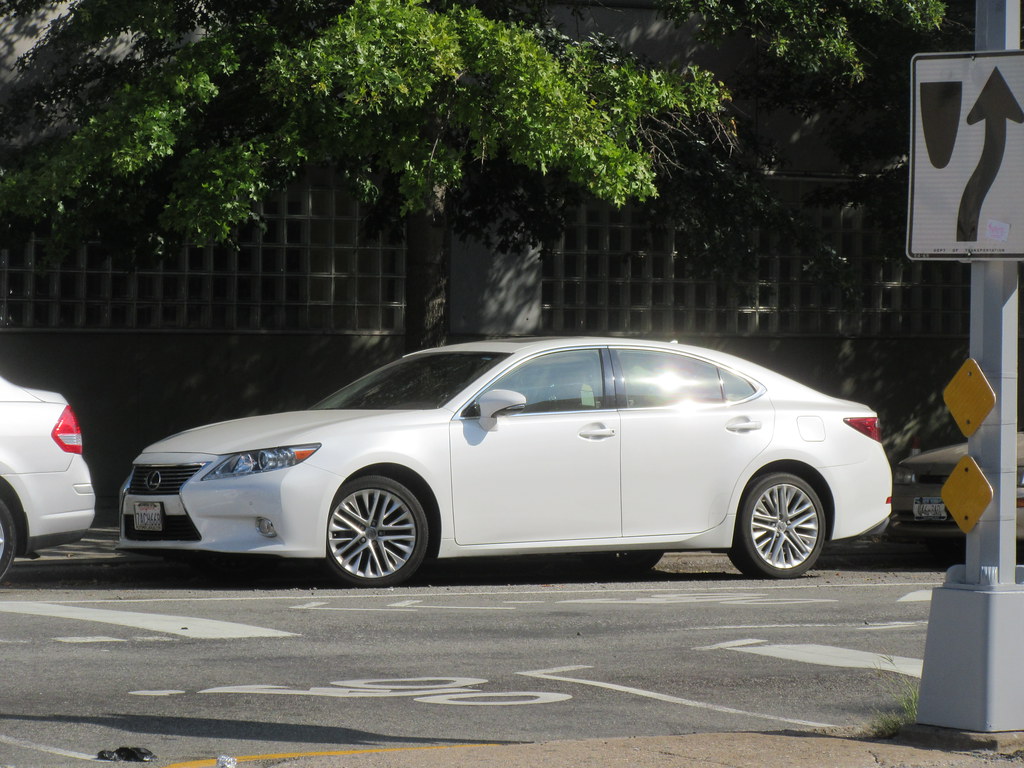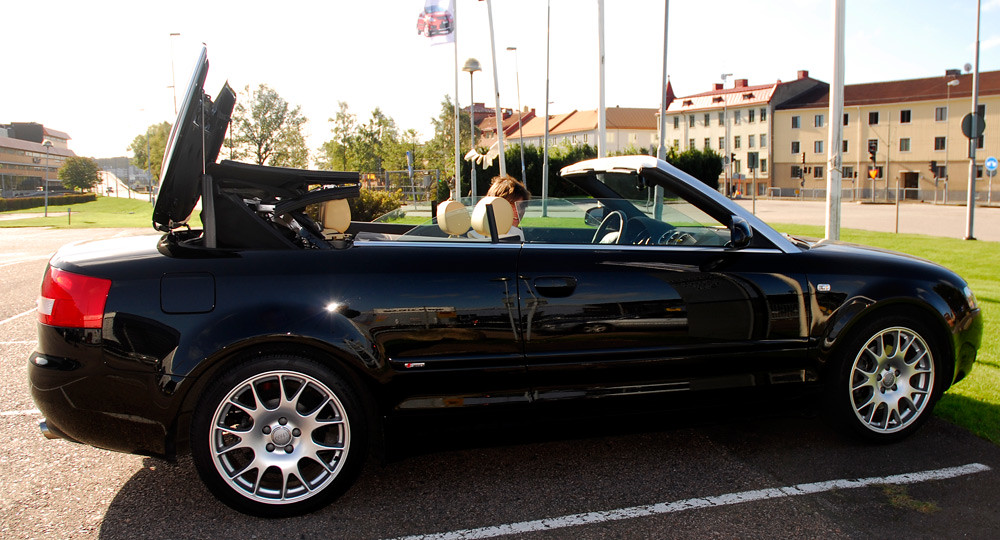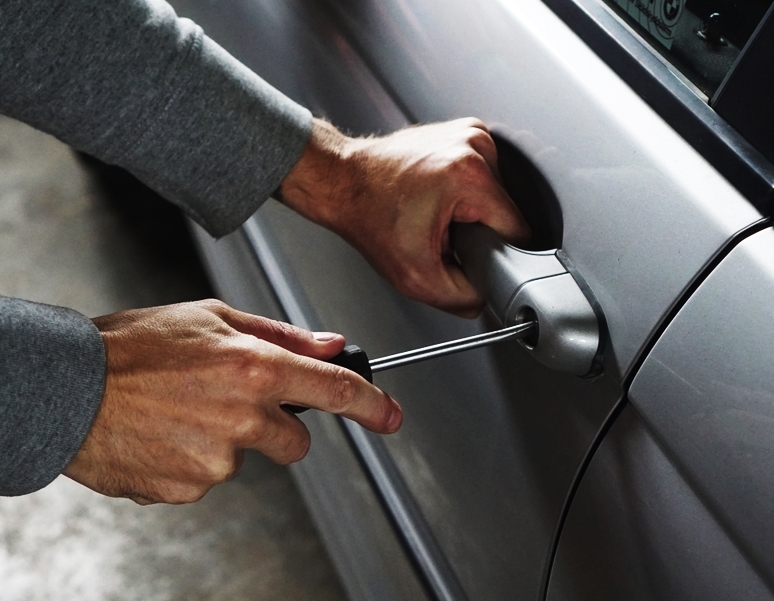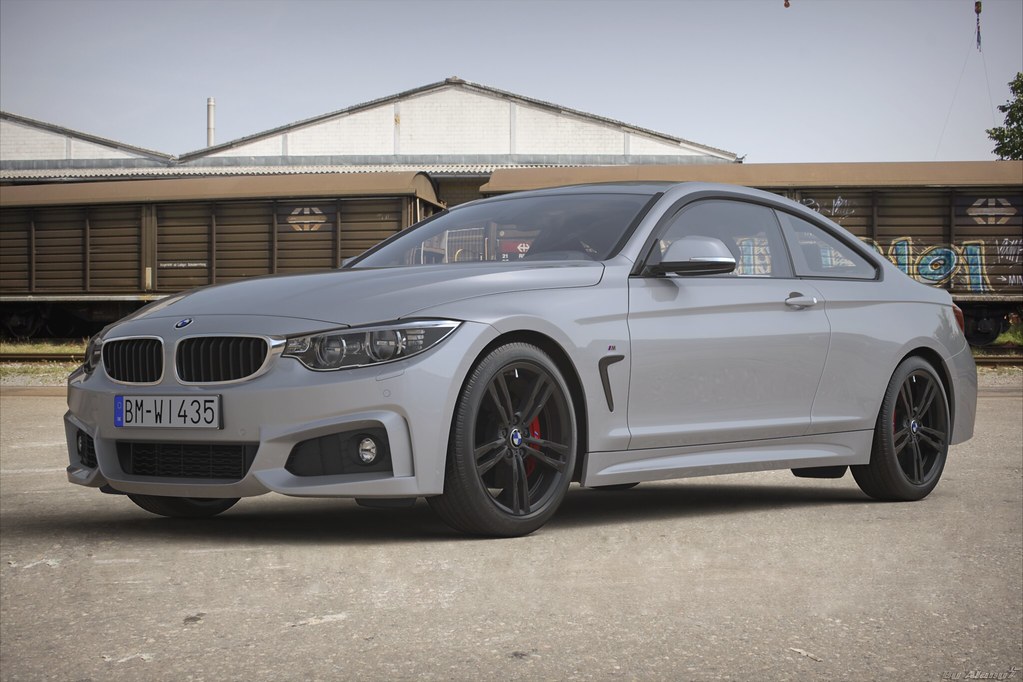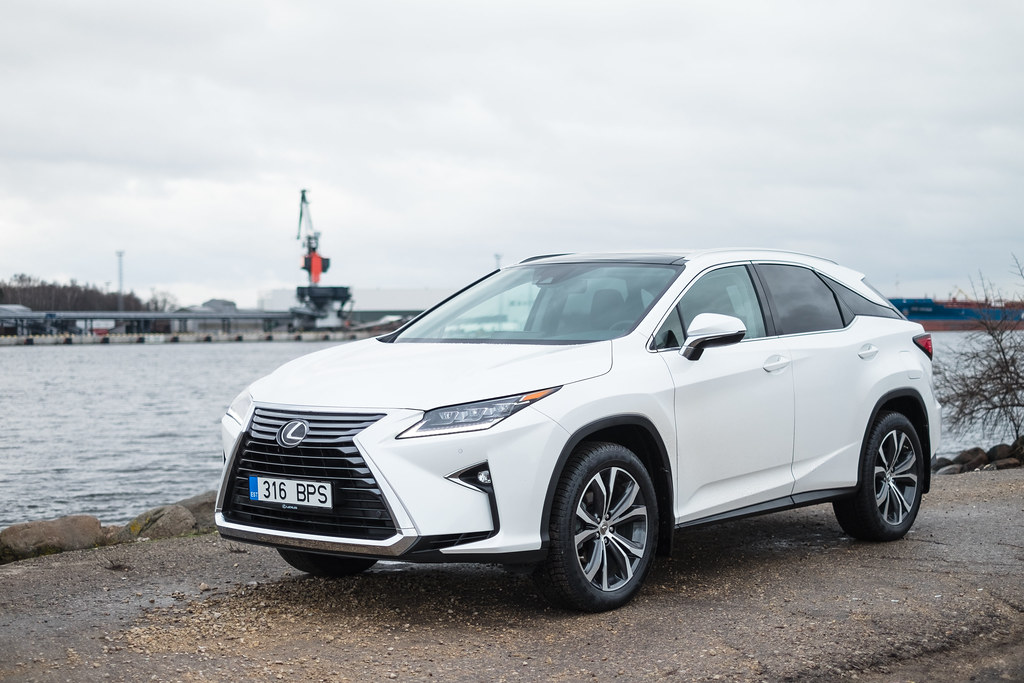
In a fiercely competitive luxury sedan market, where performance metrics and aggressive styling often dominate headlines, the 2025 Lexus ES continues to carve out an impressive niche. It’s a vehicle that, despite its many virtues, tends to fly under the radar, yet it boasts an impressive legacy that speaks volumes about its enduring appeal. Now in its seventh generation, the ES has enjoyed a decades-long production run, establishing a reputation that prioritizes substance over flash. It’s known as a dependable, straightforward, and relatively affordable choice among luxury midsize sedans, standing confidently against prestigious rivals such as the Audi A6, BMW 5 Series, and Mercedes-Benz E-Class.
This deliberate, understated approach appeals to a specific kind of buyer—one who understands that true luxury isn’t always about the loudest statement or the most eye-watering price tag. The ES embodies a philosophy that resonates with those who “simply want a car that’s comfortable, safe, reliable, efficient, and light on pretense.” It’s a vehicle that doesn’t need to shout its credentials; its quiet competence and consistent quality speak for themselves, making it a perennial favorite for those who prioritize long-term satisfaction and a serene ownership experience.
This article will delve into the specific attributes that contribute to the 2025 Lexus ES’s success as a quiet best-seller. We’ll explore its rich history and evolution, the thoughtful updates it receives, its foundational strengths in comfort, safety, and reliability, and the meticulously crafted interior. Furthermore, we’ll analyze its diverse powertrain offerings and practical considerations, providing an in-depth look at what truly makes the ES a compelling choice for discerning drivers in today’s automotive landscape.
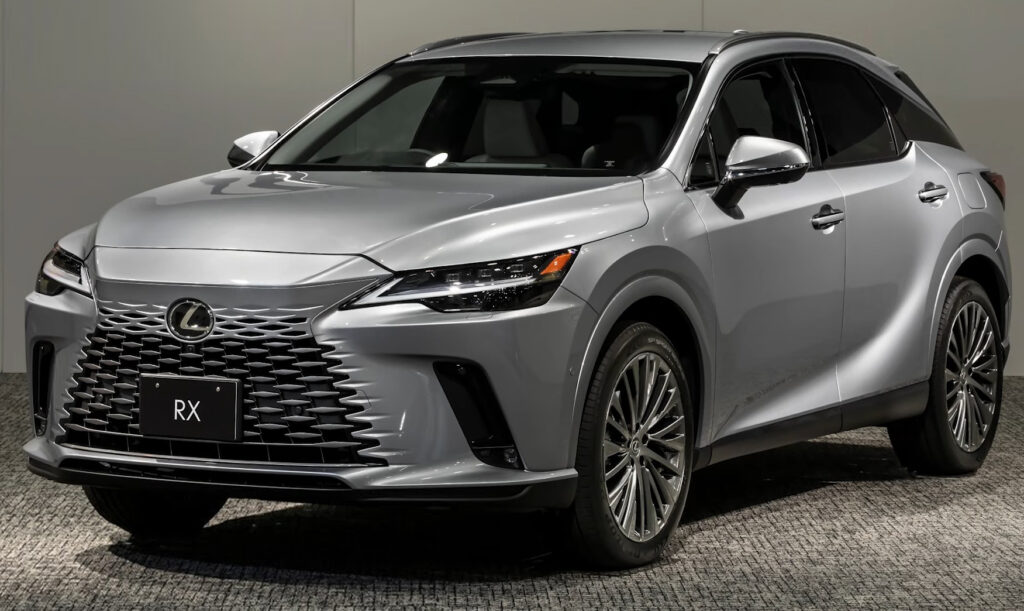
1. **A Legacy of Understated Excellence**
The Lexus ES, now in its seventh generation, represents a remarkable achievement in automotive longevity and consistent quality. Its decades-long production run is a testament to its foundational appeal, cultivating a reputation as a dependable, straightforward, and relatively affordable choice within the luxury midsize sedan segment. This enduring presence has allowed it to become a familiar and trusted option for buyers seeking premium refinement without the often-accompanying complexities or exorbitant costs.
For many years, the ES battled an arguably “unfavorable but not undeserved reputation in its first 23 years on the market for being a gussied-up Toyota Camry.” This perception, while perhaps limiting its initial luxury aspirations, underscored its inherent reliability and practicality. However, a significant turning point arrived in 2012 when Lexus transitioned the ES to a larger platform, one that the now-departed Toyota Avalon was based on. This strategic move profoundly elevated its status, transforming it into “a much more convincing luxury midsize car as a result.”
This evolution is crucial to understanding the ES’s current standing. It effectively sheds its past limitations, demonstrating Lexus’s commitment to refining and enhancing the model while staying true to its core values. The ES now stands as a prime example of “old money” philosophy in automotive form, where money is invested in “quality, not flash.” It appeals to those who appreciate that “having the means to have whatever you want is not a novelty,” and who have “nothing to prove,” preferring a vehicle that embodies understated excellence rather than ostentatious display.
Car Model Information: 2016 Lexus ES 350 Base
Name: Lexus ES
Caption: Lexus ES 350 (GSZ10)
Manufacturer: Toyota
Aka: unbulleted list
Production: June 1989 – present
Class: unbulleted list
BodyStyle: unbulleted list
Layout: unbulleted list
ModelYears: 1990–present
Categories: 1990s cars, 2000s cars, 2010s cars, 2020s cars, All-wheel-drive vehicles
Summary: The Lexus ES is a mid-size luxury sedan marketed since 1989 by Lexus, the luxury division of Toyota, across multiple generations, each offering V6 engines and a front-engine, front-wheel-drive layout. The first five generations of the ES used the Toyota Camry platform, while the latter generations are more closely related to both the Camry and the Avalon. Manual transmissions were offered until 1993, a lower-displacement inline-four engine became an option in Asian markets in 2010, and a gasoline-electric hybrid version was introduced in 2012. The ES was Lexus’s only front-wheel drive vehicle until 1998, when the related RX was introduced, and the sedan occupied the entry-level luxury car segment of the Lexus lineup in North America and other regions until the debut of the IS in 1999. The ES name stands for “Executive Sedan”. However, some Lexus importers use the name, “Elegant Sedan”.
Introduced in 1989, the first generation ES 250 was one of two vehicles in Lexus’s debut range, along with the LS 400. The second generation ES 300 debuted in 1991, followed by the third generation ES 300 in 1996, and the fourth generation ES 300/330 in 2001. The first- through fourth generation sedans shared body styling elements with Japan-market Toyota sedans, and a domestic market equivalent, the Toyota Windom (Japanese: トヨタ・ウィンダム, Toyota Windamu), was sold until the launch of the fifth generation ES in 2006. The word “Windom” is a combination of “win” and the suffix “dom” expresses a state of perpetual victory. The fifth generation ES used body styling marketed by Lexus as L-finesse and debuted in early 2006 as a 2007 model. The sixth generation ES debuted in the first half of 2012 as a 2013 model, and features increased cabin dimensions due to a longer wheelbase which is shared with the full-size XX40 series Avalon.
Lexus has positioned the ES in the comfort luxury segment, with an emphasis on interior amenities, quietness, and ride quality, in contrast with more firm-riding sport sedans. Buyers seeking more performance-focused models are targeted by the Lexus IS and rival makes, with such models offering a sportier drive with differently tuned suspensions. In Europe, Japan and other markets where it was not available until the seventh generation model, the GS sport sedans occupy the mid-size category in the Lexus lineup until it was cancelled August 2020. In the United States, the ES has been the best-selling Lexus sedan for over fifteen years.
Get more information about: Lexus ES
Buying a high-performing used car >>>
Brand: Lexus Model: ES
Price: $16,999 Mileage: 93,885 mi.
Read more about: Timeless Grit and Unyielding Power: Remembering 10 Utility Trucks That Forever Secured Their Workhorse Status
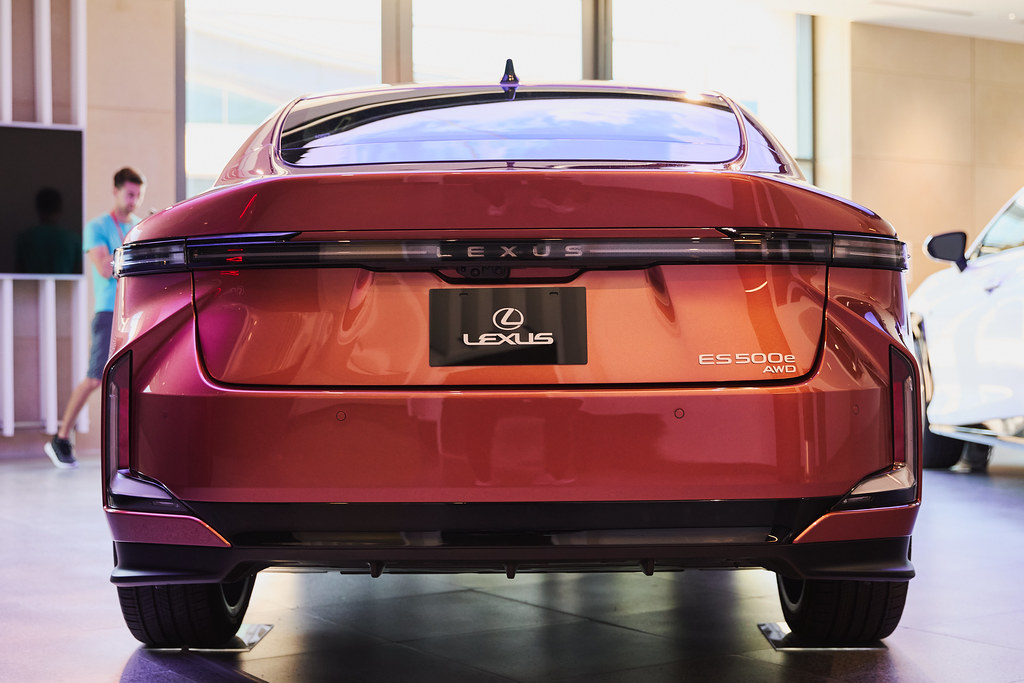
2. **Subtle Yet Significant Updates for 2025**
For the 2025 model year, the Lexus ES continues its tradition of incremental yet meaningful enhancements, ensuring it remains competitive and appealing to its dedicated customer base. The most notable update is the return of the Black Line Special Edition package, which makes a comeback after a hiatus. This edition, based on the ES350 F Sport Handling trim, adds specific aesthetic touches that cater to those looking for a slightly more distinctive appearance.
Beyond this special edition, Lexus has consistently updated the ES over the years, demonstrating a commitment to continuous improvement. For example, the 2022 model year saw the ES receive “revised exterior styling and more standard driver assist features,” enhancing both its visual appeal and its active safety credentials. These styling tweaks kept the ES’s design language contemporary without veering too far from its established elegant lines.
Further refinement came in 2023 with an “improved center console and touchscreen infotainment suite.” This update addressed a critical area for modern drivers, bringing more intuitive controls and a more responsive interface to the cabin. These gradual but impactful updates collectively ensure that the ES, while rooted in a proven platform, steadily integrates modern technologies and design elements, maintaining its relevance and solidifying its position as a thoughtful choice in the luxury segment.
Car Model Information: 2016 Lexus ES 350 Base
Name: Lexus ES
Caption: Lexus ES 350 (GSZ10)
Manufacturer: Toyota
Aka: unbulleted list
Production: June 1989 – present
Class: unbulleted list
BodyStyle: unbulleted list
Layout: unbulleted list
ModelYears: 1990–present
Categories: 1990s cars, 2000s cars, 2010s cars, 2020s cars, All-wheel-drive vehicles
Summary: The Lexus ES is a mid-size luxury sedan marketed since 1989 by Lexus, the luxury division of Toyota, across multiple generations, each offering V6 engines and a front-engine, front-wheel-drive layout. The first five generations of the ES used the Toyota Camry platform, while the latter generations are more closely related to both the Camry and the Avalon. Manual transmissions were offered until 1993, a lower-displacement inline-four engine became an option in Asian markets in 2010, and a gasoline-electric hybrid version was introduced in 2012. The ES was Lexus’s only front-wheel drive vehicle until 1998, when the related RX was introduced, and the sedan occupied the entry-level luxury car segment of the Lexus lineup in North America and other regions until the debut of the IS in 1999. The ES name stands for “Executive Sedan”. However, some Lexus importers use the name, “Elegant Sedan”.
Introduced in 1989, the first generation ES 250 was one of two vehicles in Lexus’s debut range, along with the LS 400. The second generation ES 300 debuted in 1991, followed by the third generation ES 300 in 1996, and the fourth generation ES 300/330 in 2001. The first- through fourth generation sedans shared body styling elements with Japan-market Toyota sedans, and a domestic market equivalent, the Toyota Windom (Japanese: トヨタ・ウィンダム, Toyota Windamu), was sold until the launch of the fifth generation ES in 2006. The word “Windom” is a combination of “win” and the suffix “dom” expresses a state of perpetual victory. The fifth generation ES used body styling marketed by Lexus as L-finesse and debuted in early 2006 as a 2007 model. The sixth generation ES debuted in the first half of 2012 as a 2013 model, and features increased cabin dimensions due to a longer wheelbase which is shared with the full-size XX40 series Avalon.
Lexus has positioned the ES in the comfort luxury segment, with an emphasis on interior amenities, quietness, and ride quality, in contrast with more firm-riding sport sedans. Buyers seeking more performance-focused models are targeted by the Lexus IS and rival makes, with such models offering a sportier drive with differently tuned suspensions. In Europe, Japan and other markets where it was not available until the seventh generation model, the GS sport sedans occupy the mid-size category in the Lexus lineup until it was cancelled August 2020. In the United States, the ES has been the best-selling Lexus sedan for over fifteen years.
Get more information about: Lexus ES
Buying a high-performing used car >>>
Brand: Lexus Model: ES
Price: $16,999 Mileage: 93,885 mi.
Read more about: 11 Things Baristas Really Wish You’d Stop Adding to Your Coffee
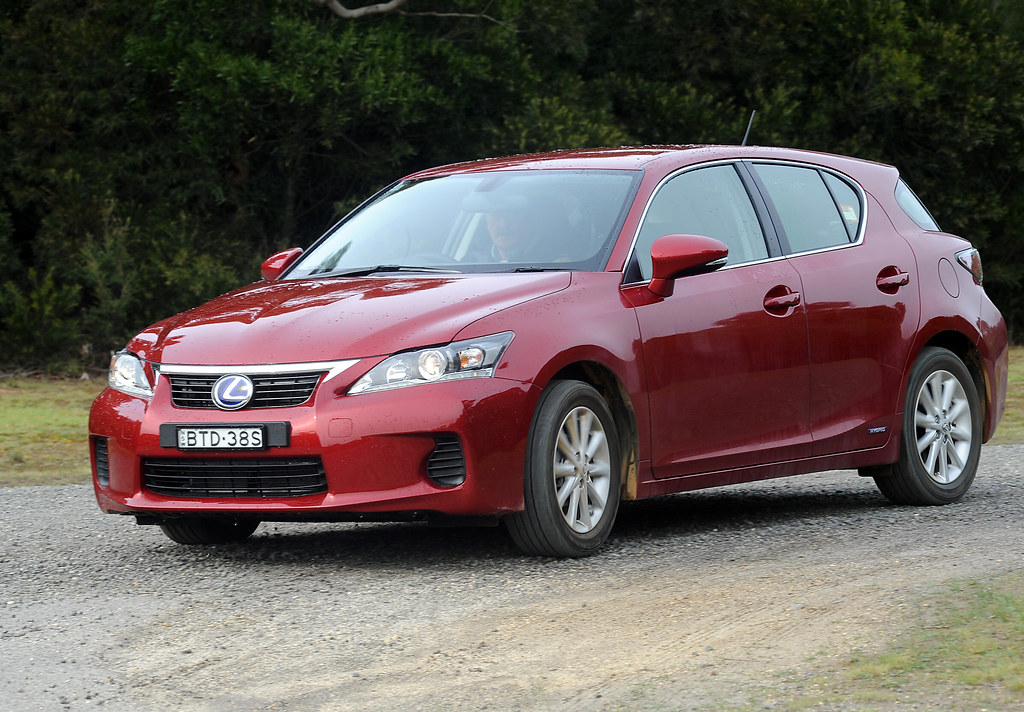
3. **The Pragmatic Appeal: Comfort, Safety, and Reliability**
The Lexus ES distinguishes itself by excelling in what many drivers truly value at their core: comfort, safety, and reliability. As articulated in the context, “Some drivers simply want a car that’s comfortable, safe, reliable, efficient, and light on pretense. The Lexus ES fits this description well.” This profound understanding of driver priorities is a cornerstone of its “quiet best-seller” status, speaking to a demographic that values peace of mind and effortless ownership.
One of the ES’s most compelling attributes is its value proposition, particularly concerning its advanced driver assist features. Lexus includes many such features as standard equipment, a strategy that starkly contrasts with some European competitors who often “charge extra for” these technologies. These standard features “work very well and contribute to the ES’ appealing value proposition,” effectively offering premium safety and convenience without forcing buyers into costly option packages.
Ultimately, the ES shines brightest in these pragmatic considerations. While it might not lead in aggressive performance metrics, its consistent delivery of a comfortable, safe, and reliable driving experience resonates deeply with its target audience. This focus on fundamental strengths ensures that owners enjoy years of easygoing and low-cost driving, a key factor contributing to its strong predicted reliability and overall satisfaction.
Car Model Information: 2016 Lexus ES 350 Base
Name: Lexus ES
Caption: Lexus ES 350 (GSZ10)
Manufacturer: Toyota
Aka: unbulleted list
Production: June 1989 – present
Class: unbulleted list
BodyStyle: unbulleted list
Layout: unbulleted list
ModelYears: 1990–present
Categories: 1990s cars, 2000s cars, 2010s cars, 2020s cars, All-wheel-drive vehicles
Summary: The Lexus ES is a mid-size luxury sedan marketed since 1989 by Lexus, the luxury division of Toyota, across multiple generations, each offering V6 engines and a front-engine, front-wheel-drive layout. The first five generations of the ES used the Toyota Camry platform, while the latter generations are more closely related to both the Camry and the Avalon. Manual transmissions were offered until 1993, a lower-displacement inline-four engine became an option in Asian markets in 2010, and a gasoline-electric hybrid version was introduced in 2012. The ES was Lexus’s only front-wheel drive vehicle until 1998, when the related RX was introduced, and the sedan occupied the entry-level luxury car segment of the Lexus lineup in North America and other regions until the debut of the IS in 1999. The ES name stands for “Executive Sedan”. However, some Lexus importers use the name, “Elegant Sedan”.
Introduced in 1989, the first generation ES 250 was one of two vehicles in Lexus’s debut range, along with the LS 400. The second generation ES 300 debuted in 1991, followed by the third generation ES 300 in 1996, and the fourth generation ES 300/330 in 2001. The first- through fourth generation sedans shared body styling elements with Japan-market Toyota sedans, and a domestic market equivalent, the Toyota Windom (Japanese: トヨタ・ウィンダム, Toyota Windamu), was sold until the launch of the fifth generation ES in 2006. The word “Windom” is a combination of “win” and the suffix “dom” expresses a state of perpetual victory. The fifth generation ES used body styling marketed by Lexus as L-finesse and debuted in early 2006 as a 2007 model. The sixth generation ES debuted in the first half of 2012 as a 2013 model, and features increased cabin dimensions due to a longer wheelbase which is shared with the full-size XX40 series Avalon.
Lexus has positioned the ES in the comfort luxury segment, with an emphasis on interior amenities, quietness, and ride quality, in contrast with more firm-riding sport sedans. Buyers seeking more performance-focused models are targeted by the Lexus IS and rival makes, with such models offering a sportier drive with differently tuned suspensions. In Europe, Japan and other markets where it was not available until the seventh generation model, the GS sport sedans occupy the mid-size category in the Lexus lineup until it was cancelled August 2020. In the United States, the ES has been the best-selling Lexus sedan for over fifteen years.
Get more information about: Lexus ES
Buying a high-performing used car >>>
Brand: Lexus Model: ES
Price: $16,999 Mileage: 93,885 mi.
Read more about: Gen Z in the Driver’s Seat: How Motorsport Fandom and Automotive Tastes Are Shifting in the Digital Age
4. **Interior Sanctum: Quality, Space, and Thoughtful Touches**
Step inside the 2025 Lexus ES, and you’re immediately enveloped in a cabin designed for comfort and quality. “Inside the cabin, spacious seats and premium materials accompany a high-quality feel.” The seating, whether it’s the “buttery NuLuxe (Lexus’ own brand of synthetic leather)” or the option for “REAL leather seating,” is crafted for exceptional comfort and support, a factor consistently praised by owners. This focus on tangible quality often surpasses what’s standard in some rivals, as “REAL leather seating” can be difficult to acquire in BMW or Benz models without special orders.
The attention to detail extends to the fit and finish, which is “excellent,” creating an environment that feels meticulously assembled. Crucially, “most of the touchpoints (gear selector, stalks for turn signals and windshield wipers, physical buttons for climate control functions) feel substantial and built to a standard, not a price.” This tactile feedback underscores a commitment to durability and a premium user experience, reinforcing the sensation of a well-engineered vehicle.
Beyond the materials, the ES cultivates an atmosphere of serene tranquility. The ride quality, characterized by a “soft but not wallowy suspension,” effectively isolates occupants from road imperfections. This, combined with “library-reading-room levels of quiet at cruising speed,” ensures a remarkably peaceful journey. For those looking to further enhance the cabin’s ambiance, the “no-extra-cost Palomino interior color” is a standout recommendation, brightening and warming an interior that, in standard black, can appear “less inviting and luxurious than it actually is.”
However, even a cabin as refined as the ES’s isn’t without its criticisms. Despite the overall high quality, some observers note “hard, brittle-feeling plastic pieces here and there that suggest that the luxury may, in fact, be an illusion.” Furthermore, the dashboard design, with its “jumble of angles and edges that look very 2019, because they are,” reflects the current generation’s age. These observations highlight areas where future iterations could further elevate the ES’s interior presentation to match its lofty comfort standards.
Car Model Information: 2016 Lexus ES 350 Base
Name: Lexus ES
Caption: Lexus ES 350 (GSZ10)
Manufacturer: Toyota
Aka: unbulleted list
Production: June 1989 – present
Class: unbulleted list
BodyStyle: unbulleted list
Layout: unbulleted list
ModelYears: 1990–present
Categories: 1990s cars, 2000s cars, 2010s cars, 2020s cars, All-wheel-drive vehicles
Summary: The Lexus ES is a mid-size luxury sedan marketed since 1989 by Lexus, the luxury division of Toyota, across multiple generations, each offering V6 engines and a front-engine, front-wheel-drive layout. The first five generations of the ES used the Toyota Camry platform, while the latter generations are more closely related to both the Camry and the Avalon. Manual transmissions were offered until 1993, a lower-displacement inline-four engine became an option in Asian markets in 2010, and a gasoline-electric hybrid version was introduced in 2012. The ES was Lexus’s only front-wheel drive vehicle until 1998, when the related RX was introduced, and the sedan occupied the entry-level luxury car segment of the Lexus lineup in North America and other regions until the debut of the IS in 1999. The ES name stands for “Executive Sedan”. However, some Lexus importers use the name, “Elegant Sedan”.
Introduced in 1989, the first generation ES 250 was one of two vehicles in Lexus’s debut range, along with the LS 400. The second generation ES 300 debuted in 1991, followed by the third generation ES 300 in 1996, and the fourth generation ES 300/330 in 2001. The first- through fourth generation sedans shared body styling elements with Japan-market Toyota sedans, and a domestic market equivalent, the Toyota Windom (Japanese: トヨタ・ウィンダム, Toyota Windamu), was sold until the launch of the fifth generation ES in 2006. The word “Windom” is a combination of “win” and the suffix “dom” expresses a state of perpetual victory. The fifth generation ES used body styling marketed by Lexus as L-finesse and debuted in early 2006 as a 2007 model. The sixth generation ES debuted in the first half of 2012 as a 2013 model, and features increased cabin dimensions due to a longer wheelbase which is shared with the full-size XX40 series Avalon.
Lexus has positioned the ES in the comfort luxury segment, with an emphasis on interior amenities, quietness, and ride quality, in contrast with more firm-riding sport sedans. Buyers seeking more performance-focused models are targeted by the Lexus IS and rival makes, with such models offering a sportier drive with differently tuned suspensions. In Europe, Japan and other markets where it was not available until the seventh generation model, the GS sport sedans occupy the mid-size category in the Lexus lineup until it was cancelled August 2020. In the United States, the ES has been the best-selling Lexus sedan for over fifteen years.
Get more information about: Lexus ES
Buying a high-performing used car >>>
Brand: Lexus Model: ES
Price: $16,999 Mileage: 93,885 mi.

5. **Triple Threat Powertrains: Options for Every Driver**
The 2025 Lexus ES distinguishes itself by offering three distinctly different powertrains, each catering to varying driver preferences and priorities. This diverse lineup ensures that whether you prioritize all-weather capability, V-6 smoothness, or exceptional fuel efficiency, there’s an ES variant designed to meet your needs. This choice is a significant advantage in a segment where options can sometimes be limited.
First in the lineup is the **AWD-equipped ES250**. This model features a “2.5-liter I-4” engine producing “203 hp/184 lb-ft” of torque. Its efficiency ratings stand at an estimated “25/34 mpg” (city/highway), and it achieves 0–60 mph in an estimated “8.6 seconds.” While some might perceive it as “under power,” a user noted that it “drives smoth for a 4 cylinder engine” and highly valued its “awd as I need it when snow comes down in winter.” This highlights its practical utility, especially for drivers in colder climates.
For those who seek more power and refinement, the **V-6-powered ES350** is the clear choice. This FWD variant boasts a “3.5-liter V-6” engine, delivering a robust “302 hp/267 lb-ft” of torque. It offers an estimated “22/32 mpg” (city/highway) and a quicker 0–60 mph acceleration of “6.6 seconds (est.).” This powertrain is praised for being “quicker, it’s quieter, it’s smoother” than its four-cylinder counterpart, with the V-6 engine being described as “soooo good, durable, smooth, with linear power production that it simply provides a better overall experience”—a true highlight for enthusiasts of traditional V-6 power.
Rounding out the options is the highly efficient **electrified ES300h hybrid**. This FWD model combines a “2.5-liter I-4 and electric motor” to produce a combined “215 hp/163 lb-ft.” Where it truly shines is in its fuel economy, achieving an impressive “43/44 mpg” (city/highway). Its 0–60 mph time of “7.3 seconds” offers a commendable balance of performance and eco-friendliness. This hybrid option is particularly compelling for those prioritizing long-term fuel savings and reduced environmental impact, without sacrificing Lexus’s signature refinement.
Car Model Information: 2016 Lexus ES 350 Base
Name: Lexus ES
Caption: Lexus ES 350 (GSZ10)
Manufacturer: Toyota
Aka: unbulleted list
Production: June 1989 – present
Class: unbulleted list
BodyStyle: unbulleted list
Layout: unbulleted list
ModelYears: 1990–present
Categories: 1990s cars, 2000s cars, 2010s cars, 2020s cars, All-wheel-drive vehicles
Summary: The Lexus ES is a mid-size luxury sedan marketed since 1989 by Lexus, the luxury division of Toyota, across multiple generations, each offering V6 engines and a front-engine, front-wheel-drive layout. The first five generations of the ES used the Toyota Camry platform, while the latter generations are more closely related to both the Camry and the Avalon. Manual transmissions were offered until 1993, a lower-displacement inline-four engine became an option in Asian markets in 2010, and a gasoline-electric hybrid version was introduced in 2012. The ES was Lexus’s only front-wheel drive vehicle until 1998, when the related RX was introduced, and the sedan occupied the entry-level luxury car segment of the Lexus lineup in North America and other regions until the debut of the IS in 1999. The ES name stands for “Executive Sedan”. However, some Lexus importers use the name, “Elegant Sedan”.
Introduced in 1989, the first generation ES 250 was one of two vehicles in Lexus’s debut range, along with the LS 400. The second generation ES 300 debuted in 1991, followed by the third generation ES 300 in 1996, and the fourth generation ES 300/330 in 2001. The first- through fourth generation sedans shared body styling elements with Japan-market Toyota sedans, and a domestic market equivalent, the Toyota Windom (Japanese: トヨタ・ウィンダム, Toyota Windamu), was sold until the launch of the fifth generation ES in 2006. The word “Windom” is a combination of “win” and the suffix “dom” expresses a state of perpetual victory. The fifth generation ES used body styling marketed by Lexus as L-finesse and debuted in early 2006 as a 2007 model. The sixth generation ES debuted in the first half of 2012 as a 2013 model, and features increased cabin dimensions due to a longer wheelbase which is shared with the full-size XX40 series Avalon.
Lexus has positioned the ES in the comfort luxury segment, with an emphasis on interior amenities, quietness, and ride quality, in contrast with more firm-riding sport sedans. Buyers seeking more performance-focused models are targeted by the Lexus IS and rival makes, with such models offering a sportier drive with differently tuned suspensions. In Europe, Japan and other markets where it was not available until the seventh generation model, the GS sport sedans occupy the mid-size category in the Lexus lineup until it was cancelled August 2020. In the United States, the ES has been the best-selling Lexus sedan for over fifteen years.
Get more information about: Lexus ES
Buying a high-performing used car >>>
Brand: Lexus Model: ES
Price: $16,999 Mileage: 93,885 mi.
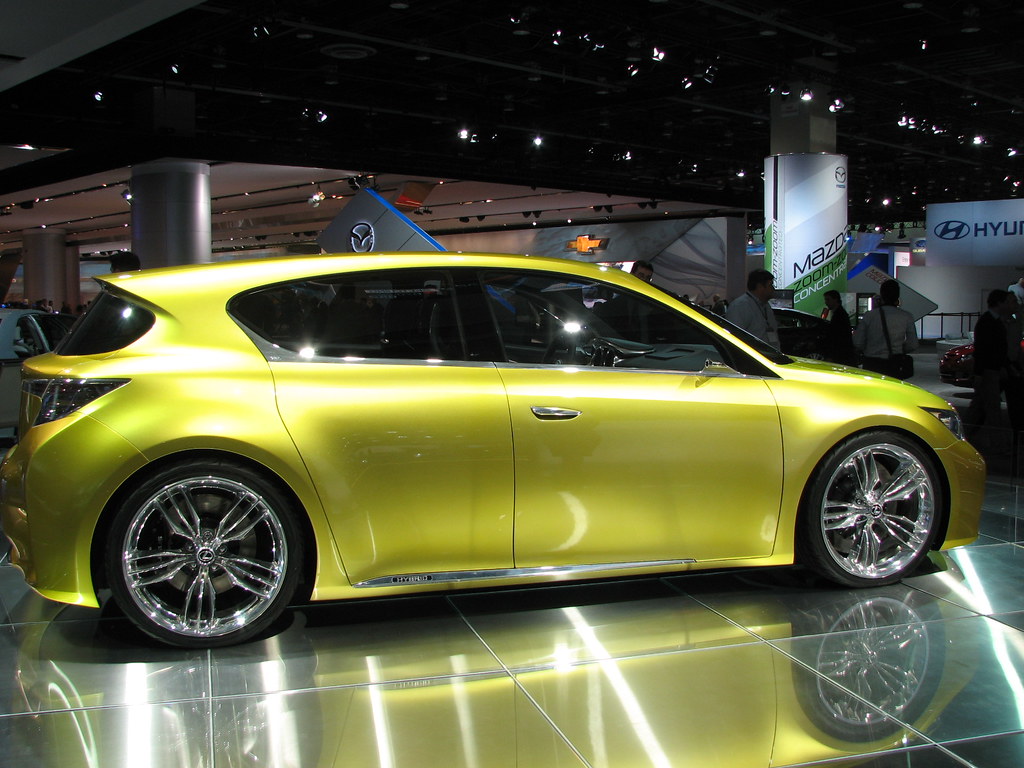
6. **Unwavering Commitment to Safety**
The 2025 Lexus ES stands as a beacon of safety within the luxury midsize sedan segment, consistently earning top marks from leading automotive safety organizations. Its dedication to occupant protection and accident prevention is evidenced by its impressive accolades. In its most recent round of safety testing, the 2024 ES secured a “five-star overall score from NHTSA, the highest possible” designation, instilling confidence in its structural integrity and crashworthiness.
Complementing the NHTSA rating, the ES also received high praise from the Insurance Institute for Highway Safety (IIHS), which “deemed it a 2023 Top Safety Pick, the agency’s second-best designation.” These rigorous independent assessments confirm that the ES is engineered to provide a robust layer of protection for its occupants in a variety of accident scenarios, further solidifying its reputation as a dependable and trustworthy vehicle.
Furthermore, like all new Lexus models, the ES comes comprehensively equipped with a generous suite of standard driver assist and active safety features. This advanced array includes crucial technologies such as “front automatic emergency braking, rear cross-traffic alert, automatic high-beams, blind-spot monitoring, lane keep assist, and adaptive cruise control.” These systems work in concert to actively monitor the vehicle’s surroundings, alert the driver to potential hazards, and, in many cases, intervene to mitigate or prevent collisions.
This robust offering of standard safety features contributes significantly to the ES’s overall value proposition. In a market where many competitors often “charge extra for” similar advanced driver assistance technologies, Lexus includes them as part of the standard package. This approach aligns perfectly with the ES’s pragmatic appeal, ensuring that premium safety is accessible to all buyers, rather than being an exclusive, costly add-on. However, a user did note a practical challenge: “when the front sensor, gets cover with snow the system goes haywire and beeps without stop and tells you to clear the sensors,” indicating that real-world conditions can sometimes temporarily impact the seamless operation of these sophisticated systems.
Read more about: Winter-Ready and Wallet-Friendly: Discover the Best 2025 Cars for Low-Cost Maintenance and Superior Snow Performance
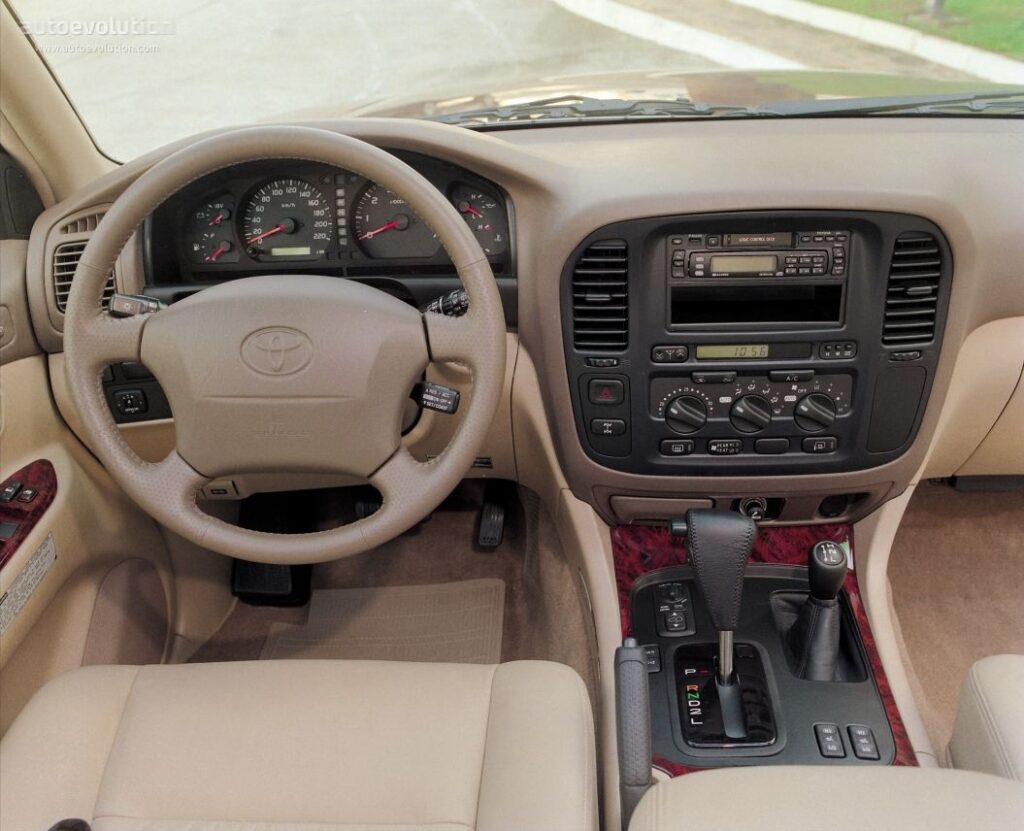
7. **Ergonomics and Room to Roam: Passenger Comfort vs. Cargo Practicality**
The interior of the 2025 Lexus ES is designed with a clear emphasis on passenger comfort, providing a welcoming environment for both front and rear occupants. “Passengers will find abundant space to stretch out inside the ES’ cabin,” making it an ideal choice for longer journeys or for those who frequently transport adults in the rear seats. This generous legroom and headroom contribute significantly to the overall sense of luxury and relaxation that the ES aims to deliver, allowing occupants to arrive at their destination feeling refreshed.
However, while passenger comfort is a strong suit, the ES presents a more modest proposition when it comes to hauling luggage. “Cargo space in the trunk isn’t tremendous,” which might be a consideration for buyers who regularly need to transport large items or significant amounts of gear. This trade-off is often typical of sedans, which prioritize cabin dimensions and aerodynamic profiles, but it’s a point worth noting for potential owners with specific cargo requirements.
Beyond the main trunk volume, the ES’s interior storage solutions receive mixed reviews. “Small item storage and cup holders – not great, just acceptable,” according to one user. Specific criticisms include the inability of the cup holders to “hold the oversized water bottles that are popular these days.” Furthermore, storage in the doors is “limited to truly small items like tissues, wallets, maybe a compact umbrella,” and the center console storage is only “OK to hold a few items, but nothing much.” This suggests that while functional, the ES doesn’t excel in maximizing every possible storage nook, an area where other brands, like Honda, are noted for their mastery of interior ergonomics.
Other design elements also influence the perceived and actual spaciousness. The ES features a “high belt line and short windows probably help keep things buttoned up and noise controlled,” contributing to the vehicle’s excellent sound insulation. However, this design choice also leads to “smallish windows have created some poor visibility and a sense of being in a confined space that was unexpected for such a large car.” Additionally, the “big extended sunroof is nice, but drops the headliner a bit and adds to the enclosed feeling,” which proved problematic for one 5’11” driver who found it difficult to achieve a comfortable seating position due to reduced headliner clearance.
Car Model Information: 2016 Lexus ES 350 Base
Name: Lexus ES
Caption: Lexus ES 350 (GSZ10)
Manufacturer: Toyota
Aka: unbulleted list
Production: June 1989 – present
Class: unbulleted list
BodyStyle: unbulleted list
Layout: unbulleted list
ModelYears: 1990–present
Categories: 1990s cars, 2000s cars, 2010s cars, 2020s cars, All-wheel-drive vehicles
Summary: The Lexus ES is a mid-size luxury sedan marketed since 1989 by Lexus, the luxury division of Toyota, across multiple generations, each offering V6 engines and a front-engine, front-wheel-drive layout. The first five generations of the ES used the Toyota Camry platform, while the latter generations are more closely related to both the Camry and the Avalon. Manual transmissions were offered until 1993, a lower-displacement inline-four engine became an option in Asian markets in 2010, and a gasoline-electric hybrid version was introduced in 2012. The ES was Lexus’s only front-wheel drive vehicle until 1998, when the related RX was introduced, and the sedan occupied the entry-level luxury car segment of the Lexus lineup in North America and other regions until the debut of the IS in 1999. The ES name stands for “Executive Sedan”. However, some Lexus importers use the name, “Elegant Sedan”.
Introduced in 1989, the first generation ES 250 was one of two vehicles in Lexus’s debut range, along with the LS 400. The second generation ES 300 debuted in 1991, followed by the third generation ES 300 in 1996, and the fourth generation ES 300/330 in 2001. The first- through fourth generation sedans shared body styling elements with Japan-market Toyota sedans, and a domestic market equivalent, the Toyota Windom (Japanese: トヨタ・ウィンダム, Toyota Windamu), was sold until the launch of the fifth generation ES in 2006. The word “Windom” is a combination of “win” and the suffix “dom” expresses a state of perpetual victory. The fifth generation ES used body styling marketed by Lexus as L-finesse and debuted in early 2006 as a 2007 model. The sixth generation ES debuted in the first half of 2012 as a 2013 model, and features increased cabin dimensions due to a longer wheelbase which is shared with the full-size XX40 series Avalon.
Lexus has positioned the ES in the comfort luxury segment, with an emphasis on interior amenities, quietness, and ride quality, in contrast with more firm-riding sport sedans. Buyers seeking more performance-focused models are targeted by the Lexus IS and rival makes, with such models offering a sportier drive with differently tuned suspensions. In Europe, Japan and other markets where it was not available until the seventh generation model, the GS sport sedans occupy the mid-size category in the Lexus lineup until it was cancelled August 2020. In the United States, the ES has been the best-selling Lexus sedan for over fifteen years.
Get more information about: Lexus ES
Buying a high-performing used car >>>
Brand: Lexus Model: ES
Price: $16,999 Mileage: 93,885 mi.

8. **Technology Suite: Connectivity and Sound**
Stepping beyond its foundational comfort and safety, the 2025 Lexus ES integrates a robust technology suite designed to keep occupants connected and entertained. At the heart of this experience is the infotainment system, which comes in two primary configurations: an 8.0-inch touchscreen for entry-level models and a larger, more immersive 12.3-inch touchscreen available on higher-end trims. Both units are praised for their functionality, described as working “well enough to get the job done,” ensuring a straightforward and reliable user experience for essential tasks.
Crucially, modern connectivity is a given, with both Apple CarPlay and Android Auto capabilities offered wirelessly as standard. This seamless integration allows drivers to effortlessly access their smartphone’s navigation, music, and communication apps without the clutter of cables, enhancing convenience and reducing distractions. Furthermore, acknowledging the increasing demand for device charging, the cabin is thoughtfully equipped with six USB ports distributed throughout, ensuring that both front and rear passengers can keep their devices powered during journeys.
While the primary infotainment displays are solid, the gauge cluster presents a slightly different picture. All ES trim levels feature a “somewhat small reconfigurable gauge cluster display,” which, while functional, might not offer the expansive digital real estate seen in some rivals. To compensate, an available head-up display can project critical driving information directly onto the windshield, keeping the driver’s eyes focused on the road. Most trims also include a wireless charging pad, adding another layer of convenience for compatible smartphones, further streamlining the cabin environment.
When it comes to audio, the ES offers a 10-speaker system as standard, providing a respectable sound experience for most listeners. However, for true audiophiles seeking a more premium acoustic environment, an optional 17-speaker Mark Levinson premium setup is available across all trims. This upgrade is a significant draw for those who prioritize sound quality, though one user noted, “Truth be told, it is very good, but not great,” and suggested it “should be the base system in a $50K car,” indicating that while it’s an improvement, it might not fully satisfy every high-fidelity expectation.
Car Model Information: 2016 Lexus ES 350 Base
Name: Lexus ES
Caption: Lexus ES 350 (GSZ10)
Manufacturer: Toyota
Aka: unbulleted list
Production: June 1989 – present
Class: unbulleted list
BodyStyle: unbulleted list
Layout: unbulleted list
ModelYears: 1990–present
Categories: 1990s cars, 2000s cars, 2010s cars, 2020s cars, All-wheel-drive vehicles
Summary: The Lexus ES is a mid-size luxury sedan marketed since 1989 by Lexus, the luxury division of Toyota, across multiple generations, each offering V6 engines and a front-engine, front-wheel-drive layout. The first five generations of the ES used the Toyota Camry platform, while the latter generations are more closely related to both the Camry and the Avalon. Manual transmissions were offered until 1993, a lower-displacement inline-four engine became an option in Asian markets in 2010, and a gasoline-electric hybrid version was introduced in 2012. The ES was Lexus’s only front-wheel drive vehicle until 1998, when the related RX was introduced, and the sedan occupied the entry-level luxury car segment of the Lexus lineup in North America and other regions until the debut of the IS in 1999. The ES name stands for “Executive Sedan”. However, some Lexus importers use the name, “Elegant Sedan”.
Introduced in 1989, the first generation ES 250 was one of two vehicles in Lexus’s debut range, along with the LS 400. The second generation ES 300 debuted in 1991, followed by the third generation ES 300 in 1996, and the fourth generation ES 300/330 in 2001. The first- through fourth generation sedans shared body styling elements with Japan-market Toyota sedans, and a domestic market equivalent, the Toyota Windom (Japanese: トヨタ・ウィンダム, Toyota Windamu), was sold until the launch of the fifth generation ES in 2006. The word “Windom” is a combination of “win” and the suffix “dom” expresses a state of perpetual victory. The fifth generation ES used body styling marketed by Lexus as L-finesse and debuted in early 2006 as a 2007 model. The sixth generation ES debuted in the first half of 2012 as a 2013 model, and features increased cabin dimensions due to a longer wheelbase which is shared with the full-size XX40 series Avalon.
Lexus has positioned the ES in the comfort luxury segment, with an emphasis on interior amenities, quietness, and ride quality, in contrast with more firm-riding sport sedans. Buyers seeking more performance-focused models are targeted by the Lexus IS and rival makes, with such models offering a sportier drive with differently tuned suspensions. In Europe, Japan and other markets where it was not available until the seventh generation model, the GS sport sedans occupy the mid-size category in the Lexus lineup until it was cancelled August 2020. In the United States, the ES has been the best-selling Lexus sedan for over fifteen years.
Get more information about: Lexus ES
Buying a high-performing used car >>>
Brand: Lexus Model: ES
Price: $16,999 Mileage: 93,885 mi.
Read more about: Performance Prowess: An In-Depth Look at the Subaru WRX Lineup and Its Sport Sedan Rivals
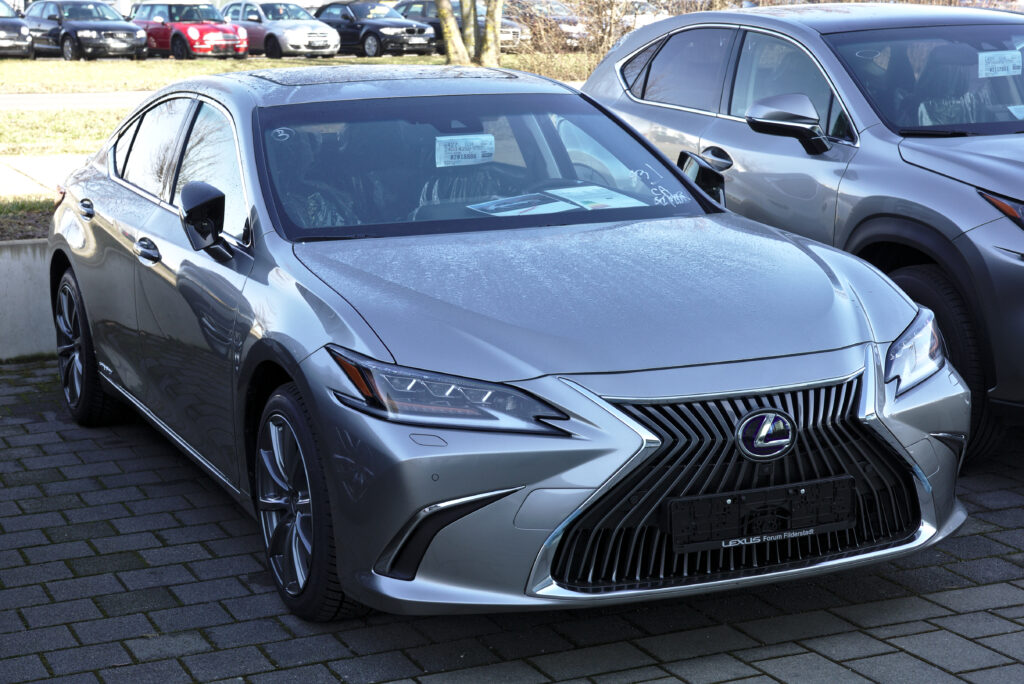
9. **Driving Dynamics: The Pursuit of Serenity (and its Limits)**
While the Lexus ES excels in comfort and quietude, its driving dynamics present a more nuanced picture, particularly when benchmarked against its segment rivals. The core philosophy of the ES prioritizes a serene, composed ride, and in many respects, it delivers. Its “soft but not wallowy suspension” effectively soaks up most road imperfections, creating that “library-reading-room levels of quiet at cruising speed” that so many drivers appreciate. This gentle approach is a deliberate design choice, catering to those who prefer a tranquil journey over aggressive cornering prowess.
However, a candid assessment reveals that “where the ES falls short is how it drives.” The primary critique often revolves around its overall refinement in motion compared to competitors. Lexus’s three distinct powertrains, while offering choice, are collectively noted for “not accelerating very impressively” and for “generating undue noise and vibration” in certain scenarios. While the V6 ES350 is lauded for being “quicker, it’s quieter, it’s smoother” than the four-cylinder, suggesting it provides a “better overall experience,” the general driving character doesn’t aim for the sporty engagement found elsewhere in the segment.
The ride quality, despite its general softness, “can get upset by rough surfaces, compromising the serene feel.” This suggests that while ideal on smooth highways, the ES might not maintain its unflappable composure when encountering more challenging road conditions. The suspension tuning, while comfortable, can sometimes feel less sophisticated than what’s found in more dynamically oriented luxury sedans, which often manage to combine compliance with better body control over varied terrains.
Ultimately, the consensus is not that the ES “drives badly,” but rather that “its competitors drive better.” This isn’t a condemnation of the ES but a reflection of its chosen priorities. While it might not offer the “quicker acceleration, superior handling, and more entertaining dynamics” of its European rivals, it steadfastly provides “comparable comfort.” This trade-off is a conscious decision by Lexus, aimed at a specific buyer who values an unburdened, comfortable commute and reliable long-term ownership over outright performance thrills or track-day capabilities.
Car Model Information: 2016 Lexus ES 350 Base
Name: Lexus ES
Caption: Lexus ES 350 (GSZ10)
Manufacturer: Toyota
Aka: unbulleted list
Production: June 1989 – present
Class: unbulleted list
BodyStyle: unbulleted list
Layout: unbulleted list
ModelYears: 1990–present
Categories: 1990s cars, 2000s cars, 2010s cars, 2020s cars, All-wheel-drive vehicles
Summary: The Lexus ES is a mid-size luxury sedan marketed since 1989 by Lexus, the luxury division of Toyota, across multiple generations, each offering V6 engines and a front-engine, front-wheel-drive layout. The first five generations of the ES used the Toyota Camry platform, while the latter generations are more closely related to both the Camry and the Avalon. Manual transmissions were offered until 1993, a lower-displacement inline-four engine became an option in Asian markets in 2010, and a gasoline-electric hybrid version was introduced in 2012. The ES was Lexus’s only front-wheel drive vehicle until 1998, when the related RX was introduced, and the sedan occupied the entry-level luxury car segment of the Lexus lineup in North America and other regions until the debut of the IS in 1999. The ES name stands for “Executive Sedan”. However, some Lexus importers use the name, “Elegant Sedan”.
Introduced in 1989, the first generation ES 250 was one of two vehicles in Lexus’s debut range, along with the LS 400. The second generation ES 300 debuted in 1991, followed by the third generation ES 300 in 1996, and the fourth generation ES 300/330 in 2001. The first- through fourth generation sedans shared body styling elements with Japan-market Toyota sedans, and a domestic market equivalent, the Toyota Windom (Japanese: トヨタ・ウィンダム, Toyota Windamu), was sold until the launch of the fifth generation ES in 2006. The word “Windom” is a combination of “win” and the suffix “dom” expresses a state of perpetual victory. The fifth generation ES used body styling marketed by Lexus as L-finesse and debuted in early 2006 as a 2007 model. The sixth generation ES debuted in the first half of 2012 as a 2013 model, and features increased cabin dimensions due to a longer wheelbase which is shared with the full-size XX40 series Avalon.
Lexus has positioned the ES in the comfort luxury segment, with an emphasis on interior amenities, quietness, and ride quality, in contrast with more firm-riding sport sedans. Buyers seeking more performance-focused models are targeted by the Lexus IS and rival makes, with such models offering a sportier drive with differently tuned suspensions. In Europe, Japan and other markets where it was not available until the seventh generation model, the GS sport sedans occupy the mid-size category in the Lexus lineup until it was cancelled August 2020. In the United States, the ES has been the best-selling Lexus sedan for over fifteen years.
Get more information about: Lexus ES
Buying a high-performing used car >>>
Brand: Lexus Model: ES
Price: $16,999 Mileage: 93,885 mi.
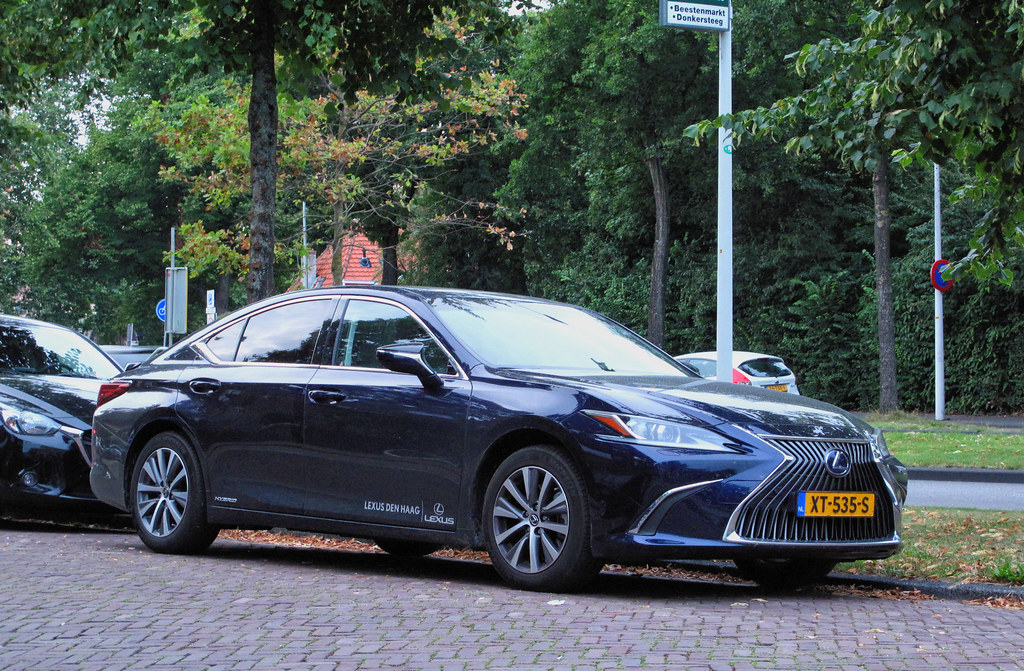
10. **Performance Profile: A Balanced Perspective**
Delving deeper into the driving experience, the ES’s performance profile, while not overtly sporty, is designed for solid everyday usability. For instance, the 3.5L V-6 engine in the ES350 is described as “smooth, reasonably powerful,” and delivering “linear power production.” This isn’t about raw, neck-snapping acceleration but about a predictable and consistent power delivery that makes daily driving effortless and confident, even with passengers on board. One user from a Honda Civic Touring found the ES350’s engine power and transmission to be significant upgrades, stating the V-6 is “soooo good, durable, smooth, with linear power production that it simply provides a better overall experience.”
The transmission accompanying the V-6, an 8-speed automatic, also contributes positively to this balanced performance. It is praised for its tuning, being “perfect for daily driving.” In “Sport mode, it holds a few extra RPM making for a slightly more responsive acceleration,” offering a touch more immediacy when desired, though most daily driving is comfortably handled in “Normal mode.” The robust, traditional automatic transmission, with its lockup torque converter, is highlighted as a superior choice over CVTs, emphasizing durability and a more engaging driving feel for enthusiasts.
Despite these positive attributes, there are still areas where the ES’s performance profile reveals its non-sporting nature. The “simple, front-wheel drive is OK for most driving,” but the absence of a limited-slip differential means “the wheel(s) spin too easily on wet pavement when pulling out from a stop.” This characteristic can detract from confidence in challenging conditions, leading one user to state they “would probably NOT use this vehicle in any snow, unless I swapped out the all-season touring tires for snow tires,” preferring an MDX for such days. This underscores that while the ES provides adequate power for its segment, its handling dynamics are firmly rooted in comfort-oriented, rather than performance-oriented, engineering.
However, the ES’s performance must also be viewed through the lens of its pragmatic strengths. Its ability to run on “87 octane” fuel is a notable cost-saving advantage, reflecting its focus on long-term, economical ownership. One user, driving 30 miles each way to work daily, notes that the vehicle is “more than adequate” and anticipates “high 20’s for gas mileage” on longer road trips. This blend of adequate, smooth power, a refined transmission, and cost-effective operation ensures that the ES delivers a performance that aligns with its promise of value and dependability, even if it doesn’t set any speed records.
Car Model Information: 2016 Lexus ES 350 Base
Name: Lexus ES
Caption: Lexus ES 350 (GSZ10)
Manufacturer: Toyota
Aka: unbulleted list
Production: June 1989 – present
Class: unbulleted list
BodyStyle: unbulleted list
Layout: unbulleted list
ModelYears: 1990–present
Categories: 1990s cars, 2000s cars, 2010s cars, 2020s cars, All-wheel-drive vehicles
Summary: The Lexus ES is a mid-size luxury sedan marketed since 1989 by Lexus, the luxury division of Toyota, across multiple generations, each offering V6 engines and a front-engine, front-wheel-drive layout. The first five generations of the ES used the Toyota Camry platform, while the latter generations are more closely related to both the Camry and the Avalon. Manual transmissions were offered until 1993, a lower-displacement inline-four engine became an option in Asian markets in 2010, and a gasoline-electric hybrid version was introduced in 2012. The ES was Lexus’s only front-wheel drive vehicle until 1998, when the related RX was introduced, and the sedan occupied the entry-level luxury car segment of the Lexus lineup in North America and other regions until the debut of the IS in 1999. The ES name stands for “Executive Sedan”. However, some Lexus importers use the name, “Elegant Sedan”.
Introduced in 1989, the first generation ES 250 was one of two vehicles in Lexus’s debut range, along with the LS 400. The second generation ES 300 debuted in 1991, followed by the third generation ES 300 in 1996, and the fourth generation ES 300/330 in 2001. The first- through fourth generation sedans shared body styling elements with Japan-market Toyota sedans, and a domestic market equivalent, the Toyota Windom (Japanese: トヨタ・ウィンダム, Toyota Windamu), was sold until the launch of the fifth generation ES in 2006. The word “Windom” is a combination of “win” and the suffix “dom” expresses a state of perpetual victory. The fifth generation ES used body styling marketed by Lexus as L-finesse and debuted in early 2006 as a 2007 model. The sixth generation ES debuted in the first half of 2012 as a 2013 model, and features increased cabin dimensions due to a longer wheelbase which is shared with the full-size XX40 series Avalon.
Lexus has positioned the ES in the comfort luxury segment, with an emphasis on interior amenities, quietness, and ride quality, in contrast with more firm-riding sport sedans. Buyers seeking more performance-focused models are targeted by the Lexus IS and rival makes, with such models offering a sportier drive with differently tuned suspensions. In Europe, Japan and other markets where it was not available until the seventh generation model, the GS sport sedans occupy the mid-size category in the Lexus lineup until it was cancelled August 2020. In the United States, the ES has been the best-selling Lexus sedan for over fifteen years.
Get more information about: Lexus ES
Buying a high-performing used car >>>
Brand: Lexus Model: ES
Price: $16,999 Mileage: 93,885 mi.
Read more about: Lewis Hamilton’s Legendary Garage: A Deep Dive into 10 Track-Ready Machines Exhibiting His Passion for Automotive Excellence
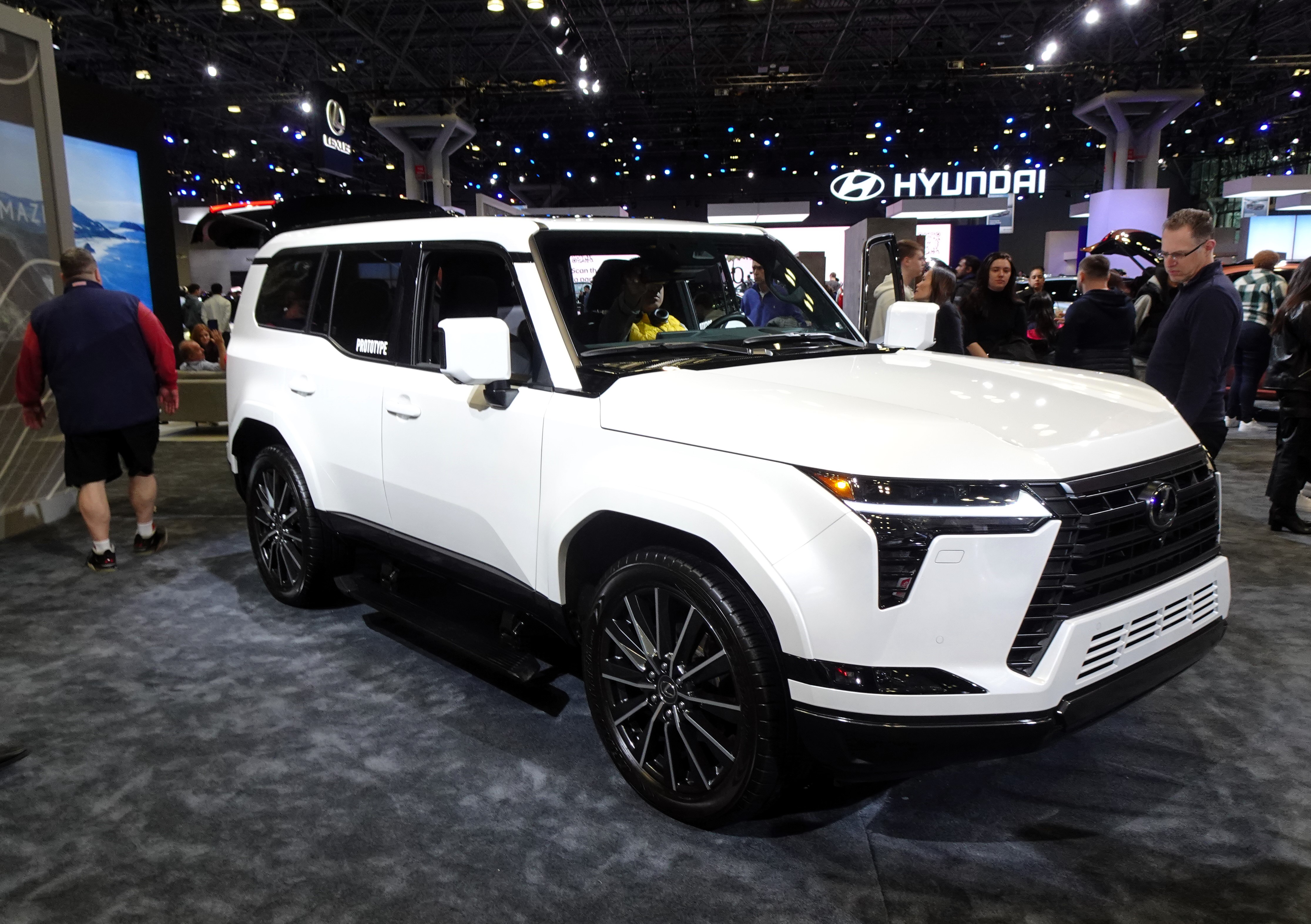
11. **Addressing the “Wall” – Areas for Refinement**
While the Lexus ES delivers a compelling package of comfort and reliability, a critical look reveals specific areas where its engineering and design choices, while aiming for one objective, might inadvertently create limitations in another. One significant point of contention lies in the “lack of refinement, especially in handling, that more expensive rivals have.” This isn’t to say the ES handles poorly, but rather that its chassis tuning leans heavily towards absorption, which can result in a less engaging and precise feel when navigating demanding roads or dynamic maneuvers.
This characteristic is compounded by the fact that the ES, despite its refreshes, is in its “seventh model year of the current generation.” The underlying platform and fundamental architecture, while robust, are simply not engineered with the same dynamic priorities as newer or more performance-focused competitors. This generational age can be felt in the way the car responds to driver inputs, often translating to less immediate steering feedback and a more deliberate, rather than agile, feel through corners. The pursuit of “gentle” comfort, while a positive, inherently means a compromise on the sharp, athletic responses that define a true sports sedan.
Furthermore, the context explicitly questions the inclusion of an F Sport trim for the ES350, stating, “if there ever was a Lexus that didn’t need an F Sport trim, the ES 350 is it. It’s cosplay that the car itself simply can’t back up.” This incisive critique highlights a perceived mismatch between the F Sport branding—which typically implies enhanced performance and handling—and the ES’s fundamental dynamic character. Despite aesthetic enhancements and specific badging, the F Sport Handling trim on the ES350 does not translate to significant actual performance upgrades, reinforcing the idea that the ES remains primarily a comfort-focused cruiser.
Even interior design elements, despite overall high quality, present areas for potential refinement. The dashboard’s “jumble of angles and edges that look very 2019, because they are,” points to a design language that is showing its age. While fit and finish are “excellent,” and many touchpoints feel “substantial,” the presence of “hard, brittle-feeling plastic pieces here and there” suggests that the luxury experience “may, in fact, be an illusion” in some areas. These details, though minor individually, collectively suggest that future iterations of the ES could benefit from a more cohesive and contemporary approach to both its interior aesthetics and driving dynamics to elevate its overall luxury proposition.
Car Model Information: 2016 Lexus ES 350 Base
Name: Lexus ES
Caption: Lexus ES 350 (GSZ10)
Manufacturer: Toyota
Aka: unbulleted list
Production: June 1989 – present
Class: unbulleted list
BodyStyle: unbulleted list
Layout: unbulleted list
ModelYears: 1990–present
Categories: 1990s cars, 2000s cars, 2010s cars, 2020s cars, All-wheel-drive vehicles
Summary: The Lexus ES is a mid-size luxury sedan marketed since 1989 by Lexus, the luxury division of Toyota, across multiple generations, each offering V6 engines and a front-engine, front-wheel-drive layout. The first five generations of the ES used the Toyota Camry platform, while the latter generations are more closely related to both the Camry and the Avalon. Manual transmissions were offered until 1993, a lower-displacement inline-four engine became an option in Asian markets in 2010, and a gasoline-electric hybrid version was introduced in 2012. The ES was Lexus’s only front-wheel drive vehicle until 1998, when the related RX was introduced, and the sedan occupied the entry-level luxury car segment of the Lexus lineup in North America and other regions until the debut of the IS in 1999. The ES name stands for “Executive Sedan”. However, some Lexus importers use the name, “Elegant Sedan”.
Introduced in 1989, the first generation ES 250 was one of two vehicles in Lexus’s debut range, along with the LS 400. The second generation ES 300 debuted in 1991, followed by the third generation ES 300 in 1996, and the fourth generation ES 300/330 in 2001. The first- through fourth generation sedans shared body styling elements with Japan-market Toyota sedans, and a domestic market equivalent, the Toyota Windom (Japanese: トヨタ・ウィンダム, Toyota Windamu), was sold until the launch of the fifth generation ES in 2006. The word “Windom” is a combination of “win” and the suffix “dom” expresses a state of perpetual victory. The fifth generation ES used body styling marketed by Lexus as L-finesse and debuted in early 2006 as a 2007 model. The sixth generation ES debuted in the first half of 2012 as a 2013 model, and features increased cabin dimensions due to a longer wheelbase which is shared with the full-size XX40 series Avalon.
Lexus has positioned the ES in the comfort luxury segment, with an emphasis on interior amenities, quietness, and ride quality, in contrast with more firm-riding sport sedans. Buyers seeking more performance-focused models are targeted by the Lexus IS and rival makes, with such models offering a sportier drive with differently tuned suspensions. In Europe, Japan and other markets where it was not available until the seventh generation model, the GS sport sedans occupy the mid-size category in the Lexus lineup until it was cancelled August 2020. In the United States, the ES has been the best-selling Lexus sedan for over fifteen years.
Get more information about: Lexus ES
Buying a high-performing used car >>>
Brand: Lexus Model: ES
Price: $16,999 Mileage: 93,885 mi.
Read more about: Ergonomic Headaches: 15 Critical Factors Leading to Awkward Seat Positions in Vehicles
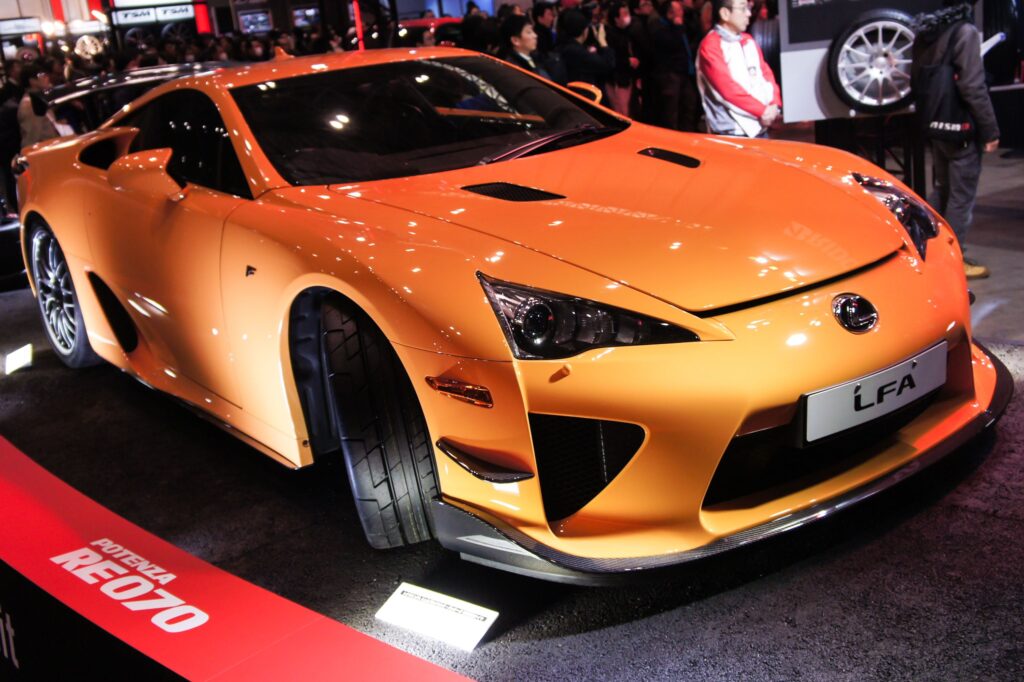
12. **The Black Line Special Edition: Style Over Substance?**
For the 2025 model year, the Lexus ES sees the return of its Black Line Special Edition package, a move that, while adding a distinctive visual flair, also highlights a recurring theme in the ES’s market approach. This special edition, making a comeback after its previous availability in 2021, is based on the ES350 F Sport Handling trim. Its primary purpose is to inject a dose of sportiness into the ES lineup, primarily through aesthetic modifications rather than tangible performance enhancements.
The Black Line Special Edition distinguishes itself with a series of blacked-out exterior accents. These include a “black trunklid spoiler,” “black side molding,” and “F Sport–branded puddle lamps,” which project the F Sport logo onto the ground when the doors are opened. These elements undeniably contribute to a more aggressive and visually striking appearance, catering to buyers who desire a bolder aesthetic that stands out from the standard ES models. Inside, the Black Line trim comes equipped with desirable technology, featuring the larger “12.3-inch infotainment touchscreen and head-up display,” enhancing the cabin’s modernity and user interface.
However, the “Car and Driver” writing style demands an objective and critical perspective, and here, the Black Line Special Edition reveals its true nature. The context explicitly states that in terms of “Actual performance upgrades? Nothing of the sort.” This observation reinforces the idea that the ES, despite Lexus’s efforts to “pass it off as so,” is fundamentally “not sporty.” The F Sport branding and the Black Line aesthetic are, therefore, more about “cosplay that the car itself simply can’t back up,” as the vehicle’s core driving dynamics remain unchanged.
This strategic choice by Lexus to offer visual sportiness without the corresponding performance underscores the ES’s position in the market. It acknowledges that while its target demographic prioritizes comfort and reliability, there’s also an appetite for distinctive styling. The Black Line Special Edition effectively serves this purpose, offering a factory-customized look that appeals to those who appreciate a unique appearance without necessarily demanding a track-ready driving experience. It’s a testament to Lexus’s understanding of its customer base, providing options that cater to aesthetic preferences while staying true to the ES’s foundational identity as a comfortable luxury cruiser.
Car Model Information: 2016 Lexus ES 350 Base
Name: Lexus ES
Caption: Lexus ES 350 (GSZ10)
Manufacturer: Toyota
Aka: unbulleted list
Production: June 1989 – present
Class: unbulleted list
BodyStyle: unbulleted list
Layout: unbulleted list
ModelYears: 1990–present
Categories: 1990s cars, 2000s cars, 2010s cars, 2020s cars, All-wheel-drive vehicles
Summary: The Lexus ES is a mid-size luxury sedan marketed since 1989 by Lexus, the luxury division of Toyota, across multiple generations, each offering V6 engines and a front-engine, front-wheel-drive layout. The first five generations of the ES used the Toyota Camry platform, while the latter generations are more closely related to both the Camry and the Avalon. Manual transmissions were offered until 1993, a lower-displacement inline-four engine became an option in Asian markets in 2010, and a gasoline-electric hybrid version was introduced in 2012. The ES was Lexus’s only front-wheel drive vehicle until 1998, when the related RX was introduced, and the sedan occupied the entry-level luxury car segment of the Lexus lineup in North America and other regions until the debut of the IS in 1999. The ES name stands for “Executive Sedan”. However, some Lexus importers use the name, “Elegant Sedan”.
Introduced in 1989, the first generation ES 250 was one of two vehicles in Lexus’s debut range, along with the LS 400. The second generation ES 300 debuted in 1991, followed by the third generation ES 300 in 1996, and the fourth generation ES 300/330 in 2001. The first- through fourth generation sedans shared body styling elements with Japan-market Toyota sedans, and a domestic market equivalent, the Toyota Windom (Japanese: トヨタ・ウィンダム, Toyota Windamu), was sold until the launch of the fifth generation ES in 2006. The word “Windom” is a combination of “win” and the suffix “dom” expresses a state of perpetual victory. The fifth generation ES used body styling marketed by Lexus as L-finesse and debuted in early 2006 as a 2007 model. The sixth generation ES debuted in the first half of 2012 as a 2013 model, and features increased cabin dimensions due to a longer wheelbase which is shared with the full-size XX40 series Avalon.
Lexus has positioned the ES in the comfort luxury segment, with an emphasis on interior amenities, quietness, and ride quality, in contrast with more firm-riding sport sedans. Buyers seeking more performance-focused models are targeted by the Lexus IS and rival makes, with such models offering a sportier drive with differently tuned suspensions. In Europe, Japan and other markets where it was not available until the seventh generation model, the GS sport sedans occupy the mid-size category in the Lexus lineup until it was cancelled August 2020. In the United States, the ES has been the best-selling Lexus sedan for over fifteen years.
Get more information about: Lexus ES
Buying a high-performing used car >>>
Brand: Lexus Model: ES
Price: $16,999 Mileage: 93,885 mi.
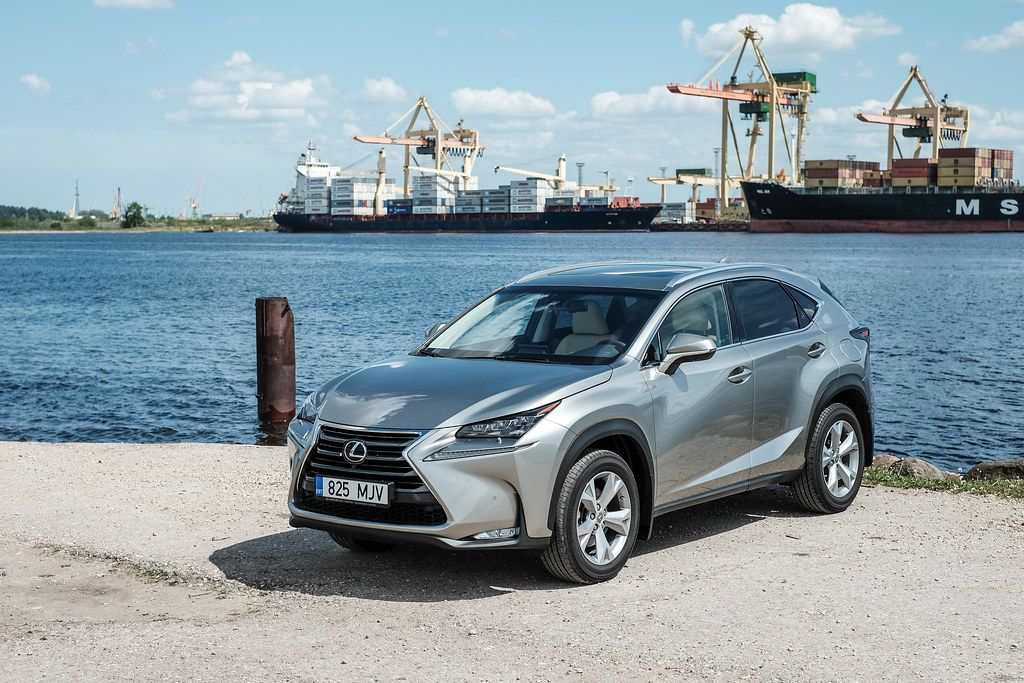
13. **Market Philosophy: Old Money’s Quiet Charms**
The Lexus ES occupies a unique and rather insightful position within the luxury midsize sedan segment, often appealing to a distinct demographic characterized by a “quiet best-seller” philosophy. This market perception is best understood through the lens of “new money” versus “old money,” a distinction that elegantly captures the ES’s understated appeal. While “new money” might gravitate towards vehicles that loudly proclaim success with “the most expensive… everything,” including “screaming yellow Lamborghini Huracán EVO Spyder,” the ES aligns squarely with the “old money” mindset.
“Old money,” often referred to as generational wealth, signifies a perspective where “having the means to have whatever you want is not a novelty to you, and you have nothing to prove.” For this discerning buyer, money is wisely invested in “quality, not flash.” They recognize that “a car is a depreciating asset,” and therefore, “you don’t dump six figures into it” merely for ostentatious display. The Lexus ES perfectly embodies this ethos, offering premium quality, comfort, and reliability without the excessive pretense or aggressive styling often associated with overt luxury.
This subtle approach has allowed the ES to overcome historical perceptions. For its first 23 years, it grappled with an “unfavorable but not undeserved reputation… for being a gussied-up Toyota Camry.” However, a pivotal shift occurred in 2012 when it moved to the larger platform shared with the Toyota Avalon, transforming it into “a much more convincing luxury midsize car.” This evolution allowed the ES to solidify its identity as a genuinely luxurious offering that prioritizes intrinsic value over superficial extravagance.
Thus, the ES appeals to those who seek a sophisticated, comfortable, and dependable vehicle that performs its duties with quiet competence. It’s a choice for the individual who values substance, longevity, and a serene ownership experience, preferring a “dark blue” Lexus ES over a flashy supercar. This deep understanding of its target audience—those who prioritize practical luxury and timeless quality—is fundamental to the ES’s enduring success and its ability to maintain its “quiet best-seller” status in a market often swayed by louder, more aggressive propositions.
Car Model Information: 2016 Lexus ES 350 Base
Name: Lexus ES
Caption: Lexus ES 350 (GSZ10)
Manufacturer: Toyota
Aka: unbulleted list
Production: June 1989 – present
Class: unbulleted list
BodyStyle: unbulleted list
Layout: unbulleted list
ModelYears: 1990–present
Categories: 1990s cars, 2000s cars, 2010s cars, 2020s cars, All-wheel-drive vehicles
Summary: The Lexus ES is a mid-size luxury sedan marketed since 1989 by Lexus, the luxury division of Toyota, across multiple generations, each offering V6 engines and a front-engine, front-wheel-drive layout. The first five generations of the ES used the Toyota Camry platform, while the latter generations are more closely related to both the Camry and the Avalon. Manual transmissions were offered until 1993, a lower-displacement inline-four engine became an option in Asian markets in 2010, and a gasoline-electric hybrid version was introduced in 2012. The ES was Lexus’s only front-wheel drive vehicle until 1998, when the related RX was introduced, and the sedan occupied the entry-level luxury car segment of the Lexus lineup in North America and other regions until the debut of the IS in 1999. The ES name stands for “Executive Sedan”. However, some Lexus importers use the name, “Elegant Sedan”.
Introduced in 1989, the first generation ES 250 was one of two vehicles in Lexus’s debut range, along with the LS 400. The second generation ES 300 debuted in 1991, followed by the third generation ES 300 in 1996, and the fourth generation ES 300/330 in 2001. The first- through fourth generation sedans shared body styling elements with Japan-market Toyota sedans, and a domestic market equivalent, the Toyota Windom (Japanese: トヨタ・ウィンダム, Toyota Windamu), was sold until the launch of the fifth generation ES in 2006. The word “Windom” is a combination of “win” and the suffix “dom” expresses a state of perpetual victory. The fifth generation ES used body styling marketed by Lexus as L-finesse and debuted in early 2006 as a 2007 model. The sixth generation ES debuted in the first half of 2012 as a 2013 model, and features increased cabin dimensions due to a longer wheelbase which is shared with the full-size XX40 series Avalon.
Lexus has positioned the ES in the comfort luxury segment, with an emphasis on interior amenities, quietness, and ride quality, in contrast with more firm-riding sport sedans. Buyers seeking more performance-focused models are targeted by the Lexus IS and rival makes, with such models offering a sportier drive with differently tuned suspensions. In Europe, Japan and other markets where it was not available until the seventh generation model, the GS sport sedans occupy the mid-size category in the Lexus lineup until it was cancelled August 2020. In the United States, the ES has been the best-selling Lexus sedan for over fifteen years.
Get more information about: Lexus ES
Buying a high-performing used car >>>
Brand: Lexus Model: ES
Price: $16,999 Mileage: 93,885 mi.
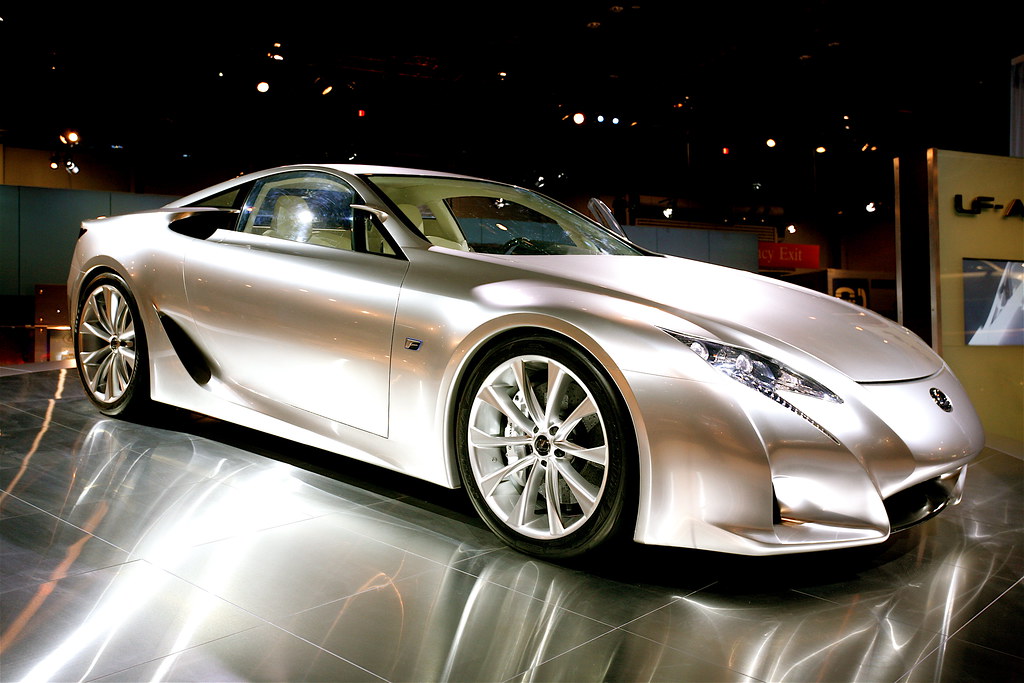
14. **Looking Ahead: The ES’s Evolving Horizon**
As the 2025 Lexus ES continues its successful run, industry observers and enthusiasts naturally turn their gaze toward its future, particularly concerning a potential redesign. Lexus, as Toyota’s luxury division, frequently bases its vehicles on developments from its mainstream counterpart. This lineage is particularly relevant for the ES, which “shares hardware with the Toyota Camry.” Given that the Camry has recently undergone a redesign for 2025, the question inevitably arises: “could a new Lexus ES be on the way?”
The timing certainly suggests such a possibility. The current seventh generation of the ES “has been around since 2019,” meaning a redesign “soon would make sense” to keep the model competitive and current. Automotive product cycles typically see major refreshes or full redesigns within a six-to-eight-year window, and the ES is approaching the latter end of that spectrum. A new generation would allow Lexus to address some of the criticisms noted in the current model, such as the dated dashboard design and the subtle lack of refinement in certain dynamic aspects.
However, the broader market landscape presents its own set of influences. The trend of sedans “continu[ing] to fall out of favor compared to SUVs” is a significant factor. Lexus’s own product portfolio reflects this shift, with the brand offering “three sedan models, and seven SUVs.” This imbalance underscores the commercial pressures facing the sedan segment, which could impact the development priorities for a next-generation ES. While the ES remains a strong seller, resource allocation often follows market demand.
Should a next-generation ES indeed materialize, expectations are already forming around its potential powertrain. Following the lead of the new Camry, it is “likely [to be] built exclusively with a hybrid powertrain.” This strategic pivot would align with Lexus’s broader commitment to electrification and enhanced fuel efficiency across its lineup. If a redesigned ES does arrive, it is projected to debut as a “2026 or 2027 model,” signaling a significant evolution for this quiet best-seller, potentially redefining its blend of luxury, efficiency, and understated appeal for a new era.
Car Model Information: 2016 Lexus ES 350 Base
Name: Lexus ES
Caption: Lexus ES 350 (GSZ10)
Manufacturer: Toyota
Aka: unbulleted list
Production: June 1989 – present
Class: unbulleted list
BodyStyle: unbulleted list
Layout: unbulleted list
ModelYears: 1990–present
Categories: 1990s cars, 2000s cars, 2010s cars, 2020s cars, All-wheel-drive vehicles
Summary: The Lexus ES is a mid-size luxury sedan marketed since 1989 by Lexus, the luxury division of Toyota, across multiple generations, each offering V6 engines and a front-engine, front-wheel-drive layout. The first five generations of the ES used the Toyota Camry platform, while the latter generations are more closely related to both the Camry and the Avalon. Manual transmissions were offered until 1993, a lower-displacement inline-four engine became an option in Asian markets in 2010, and a gasoline-electric hybrid version was introduced in 2012. The ES was Lexus’s only front-wheel drive vehicle until 1998, when the related RX was introduced, and the sedan occupied the entry-level luxury car segment of the Lexus lineup in North America and other regions until the debut of the IS in 1999. The ES name stands for “Executive Sedan”. However, some Lexus importers use the name, “Elegant Sedan”.
Introduced in 1989, the first generation ES 250 was one of two vehicles in Lexus’s debut range, along with the LS 400. The second generation ES 300 debuted in 1991, followed by the third generation ES 300 in 1996, and the fourth generation ES 300/330 in 2001. The first- through fourth generation sedans shared body styling elements with Japan-market Toyota sedans, and a domestic market equivalent, the Toyota Windom (Japanese: トヨタ・ウィンダム, Toyota Windamu), was sold until the launch of the fifth generation ES in 2006. The word “Windom” is a combination of “win” and the suffix “dom” expresses a state of perpetual victory. The fifth generation ES used body styling marketed by Lexus as L-finesse and debuted in early 2006 as a 2007 model. The sixth generation ES debuted in the first half of 2012 as a 2013 model, and features increased cabin dimensions due to a longer wheelbase which is shared with the full-size XX40 series Avalon.
Lexus has positioned the ES in the comfort luxury segment, with an emphasis on interior amenities, quietness, and ride quality, in contrast with more firm-riding sport sedans. Buyers seeking more performance-focused models are targeted by the Lexus IS and rival makes, with such models offering a sportier drive with differently tuned suspensions. In Europe, Japan and other markets where it was not available until the seventh generation model, the GS sport sedans occupy the mid-size category in the Lexus lineup until it was cancelled August 2020. In the United States, the ES has been the best-selling Lexus sedan for over fifteen years.
Get more information about: Lexus ES
Buying a high-performing used car >>>
Brand: Lexus Model: ES
Price: $16,999 Mileage: 93,885 mi.
Read more about: Keanu Reeves: Unpacking the Enduring Appeal of a Hollywood Enigma Across Four Decades
The 2025 Lexus ES stands as a compelling testament to the power of pragmatic luxury, quietly asserting its dominance in a segment often preoccupied with ostentatious displays. It’s a vehicle that doesn’t chase every fleeting trend but instead refines a proven formula, offering a sanctuary of comfort, impeccable safety, and unwavering reliability that resonates deeply with a discerning clientele. From its meticulously crafted interior to its diverse powertrain options and commitment to foundational excellence, the ES embodies a philosophy of quality over flash, a true “old money” approach to automotive ownership. While it may not win every drag race or carve every corner with razor-sharp precision, its enduring appeal lies in its sophisticated simplicity, its profound comfort, and its steadfast dependability. The ES is more than just a car; it’s a statement about what true luxury can be when stripped of pretense—a quiet best-seller that truly understands the value of a serene, confident journey.

